Share the post "What Is a Set Piece in Soccer? (Kicks and Throws)"
During the last World Cup, we saw a spike in set-piece goals. Teams thought to be underdogs utilized dead ball opportunities to outplay much experienced teams. Russia, the host country, took full advantage of set pieces. But what is a set piece in soccer?
A set-piece is a play that results from a foul or when a ball goes out of play, and the referee blows the whistle. Whenever there’s such an occurrence, the offended team starts the play.
A set-piece can be a corner play, free kick, or penalty. The only set piece that does not involve kicking the ball is a throw-in.
To understand more about set pieces, we shall explore the following:
- What is a set piece?
- The types of set pieces in soccer
- How to train a set piece in soccer
- How to defend set pieces in soccer
Set pieces are a big part of a soccer game, they can decide if a team loses or wins. Let’s find out what they are and how to play them.
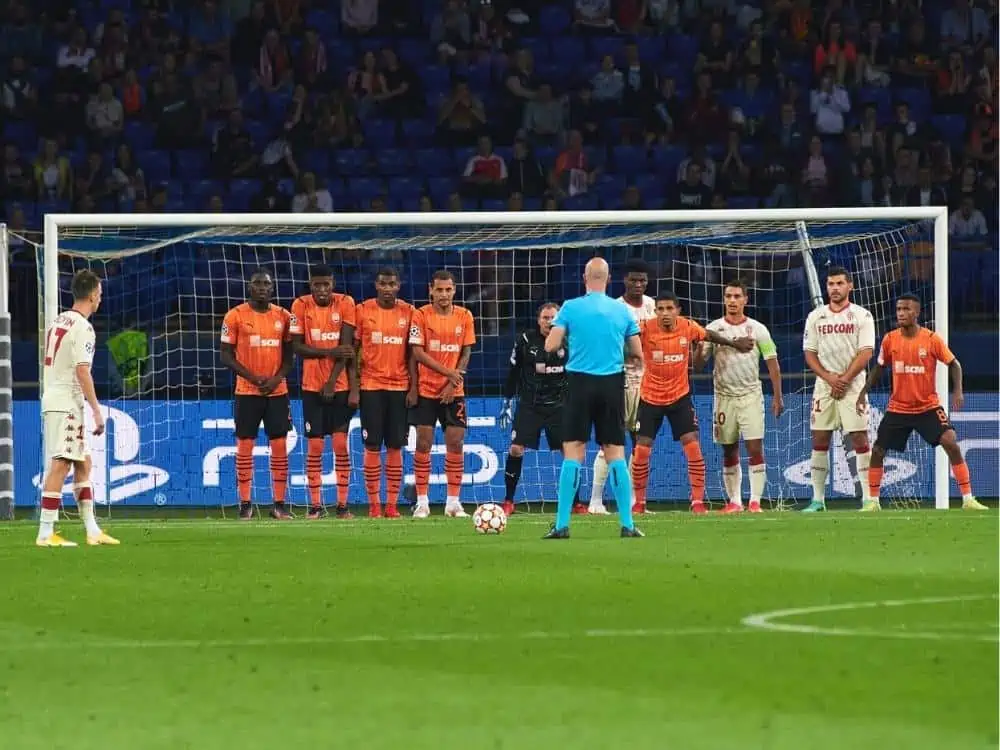
What Is Meant by Set-Piece?
If you’re a soccer fanatic, the chances are that you have come across the term set piece. So what does it mean? How is it executed? What role does it play?
A set-piece in soccer refers to the period there is a restart of the play after foul play or when the ball goes out. Then, the ball goes back to open play, continuing the game.
A set piece gives the team an avenue to utilize pre-prepared tactics that they practice while training. For any team, having a set-piece specialist is a blessing in disguise.
What Are All the Set Pieces in Soccer?
When the game stops due to foul play or the ball going out, that becomes a set-piece opportunity.
Set pieces include the following:
Corner Kicks
When the soccer ball crosses over the goal line but not into the goal and the last person to touch the ball is from the defending side, a corner kick is awarded.
Most teams have designated players who take corners for the team in a game. Since a corner is a set-piece, teams can exercise their strategy, which they utilize when the opportunity arises.
Most goals from a corner are scored using headers; therefore, whenever a team gets a corner opportunity, the taker and the players near the goal post can easily execute a set piece that is most likely to result in a goal.
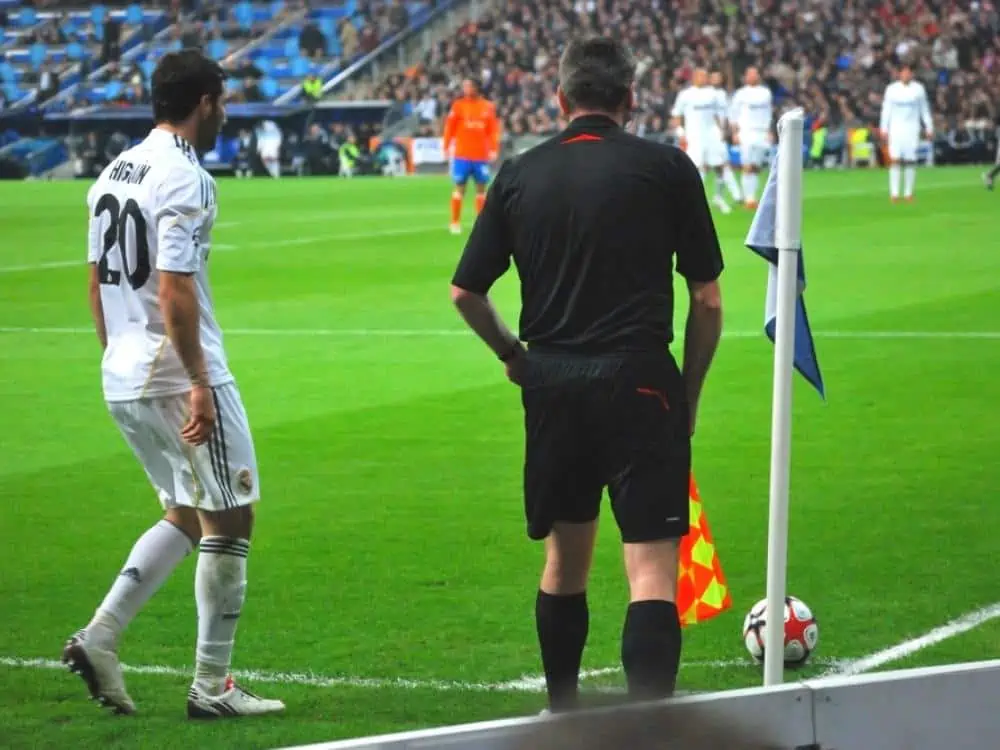
Throw-ins
A throw-in is awarded when the ball goes out of the touchline, and the last person it was in contact with is the opponent. A player throws the ball to their teammate to continue to play in a throw-in.
Unlike other set pieces, one cannot score from a throw-in. If the ball goes into the opponent’s goal, it becomes a goal kick. If it goes into the thrower’s goal, it becomes a corner.
Nonetheless, throw-ins can result in perfectly executed set pieces that utilize the strengths of given players to put the ball at the back of the net.
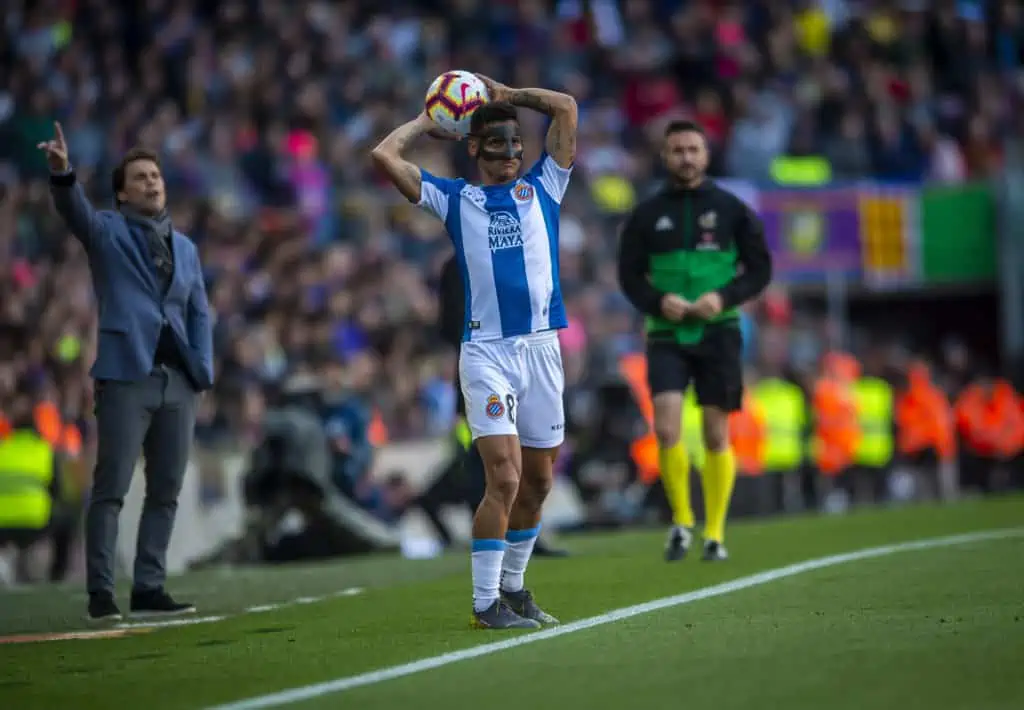
Penalties
A penalty is the most converted set-piece with upwards of 70% success rate. The penalty is usually awarded to a team if a foul is inside the penalty box.
You can score from a penalty kick, but the player taking the penalty should be clearly identified and only touch the ball.
Sometimes players are creative, and instead of kicking the ball straight to the goal, they touch it bypassing it, and a player on his team can try to score.
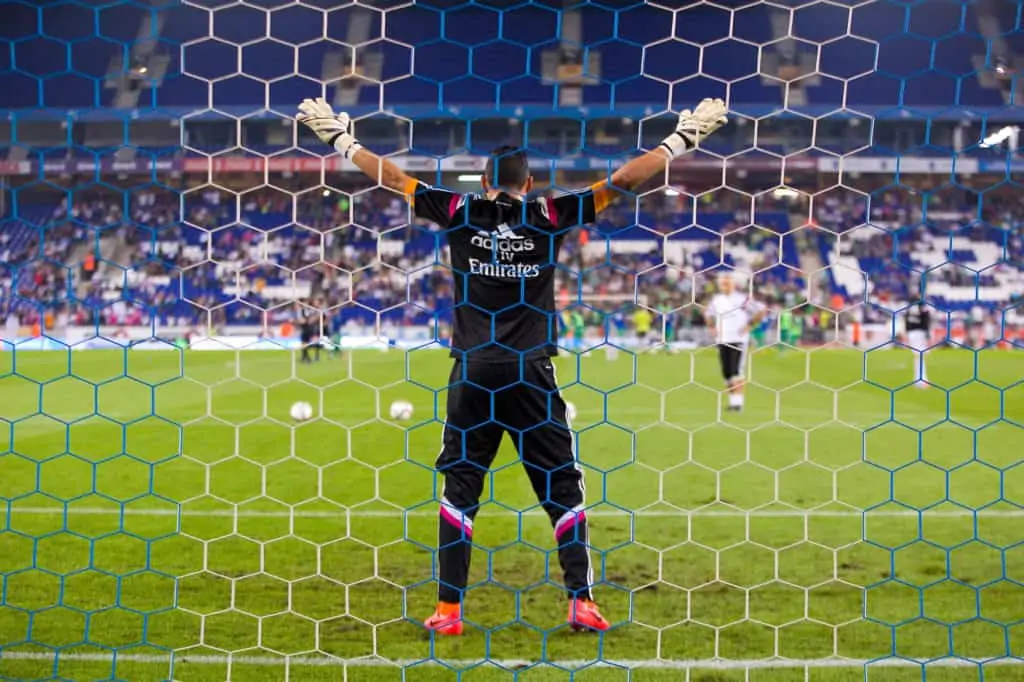
Free Kicks
A free kick is awarded to the opposing team when you commit an offense. There are two types of free kicks, an indirect free kick, and a direct free kick.
A direct free kick is where one player can touch the ball and score, whereas an indirect free kick has to be played by two players before it goes into the net to be considered a goal.
The referee shows an indirect free kick by raising their arm above the head and not putting it down until the ball touches the second player.
A free-kick is another exceptional set piece. With the right tactics, player position, and intelligent play, teams can dominate by being excellent at free-kicks conversion.
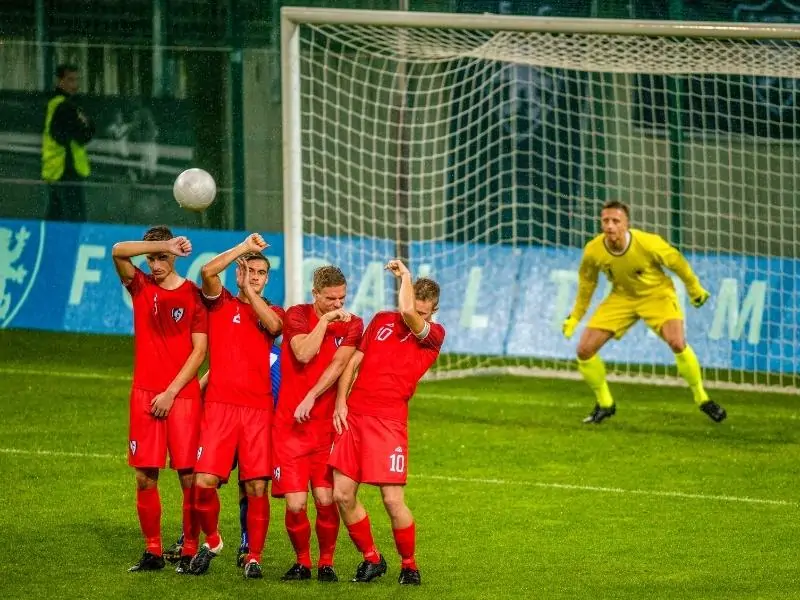
What Is a Set-Piece Goal in Soccer?
A high number of set-piece goals characterized the 2018 World Cup. To put that into context, 38 goals were scored in the preliminaries, and 53 percent came from set-pieces. Among the goals scored, there were seven penalty goals, six corner kick goals, and three free-kick goals.
Set-piece goals occur when a goal is scored from a ball that is not in motion, “dead,” for instance, in a penalty or a direct free kick.
Also, if the taking player sets the ball and a teammate scores, then the goal will be termed a set-piece goal.
Some of the best set-piece players globally include Lionel Messi, Kevin De Bruyne, James Ward-Prowse, Trent Alexander-Arnold, Juninho, and Toni Kroos.
Strategies and Tactics Used in Each Set Piece
Each set piece needs its tactics to be successful.
Throw-ins
The key to remember is that one cannot score from a throw-in. As a result, not so many goals come from throw-ins, but that doesn’t mean it cannot happen.
To take advantage of throw-ins, you need to select a player with long arms and the hand power to throw the ball deep into the field. Then, when there is a throw-in near the opponents’ goals, a good thrower can throw the ball into the penalty box, looking for a header goal.
Corner Kicks
Corner kicks get more conversation than throw-ins, but most goals are not immediate goals. When a goal is scored directly from the corner, it is called the Olympico or a direct corner.
But to materialize a corner, several other tactics are employed, including:
Short Corner
A short corner involves the corner taker passing the ball to their teammate, roughly 10 yards away. The strategy tries to make the defensive players move towards the ball and clear the goal area upon which the two players can easily cross the ball to a space left by the defenders.
Near Post Corner
When the player taking the corner notices that no defensive player is guarding the near post, they can opt to kick the ball there.
Their teammate can easily score using a header or their foot, or if they cannot, they pass it to their teammate in a better position to score. It helps if the player is tall because a header is plausible here.
Far Post Corner
The far post corner is similar to a near-post corner, only that the ball, in this case, is aimed at the far post. The far post corner strategy banks on tall players’ ability to sprint from the edge of the box and intercept the ball.
Mid-Range Corner
Now that you understand the near post and the far post corners, the mid-range corner, as the name suggests, is a corner taken and directed to the mid of the goal. Again, the ball should land at the front of the goal to enable scoring using a header or the foot.
Inswinging Corner
With the inswinging corner, when the player hits the ball, they try to give it an inward spin such that the ball curves towards the goal, making it easier for the attacking players to score.
Outswinging Corner
An out-swinging corner has the ball curving away from the goal. It is usually to target a specific player who will score in such a corner.
Free Kicks
There are two types of free kicks: the direct free kick and the indirect free kick.
Indirect Free Kick
During an indirect free kick, the taker cannot score. The ball has to be touched by the second player of the same team before it goes into the net. Otherwise, it doesn’t count as a goal.
Therefore, it is essential that while training, you practice several play scenarios that you can implement when such an opportunity arises.
If the ball is far from the opponent’s goal, you can implement a quick free-kick to catch your opponent flat-footed and serve a sweet counterattack.
Direct Free Kick
A direct free kick is when the free-kick taker sends it right into the net. Some players have carved out a name for themselves regarding free-kick taking.
The essential in this set piece is a player with exceptional placing ability and leg power. For a direct free kick to be successful, the taker has to observe the goal and the defense and see precisely how the ball will travel to the goal.
Then they should hit the ball hard and curve it as necessary. The ball has to move so fast that no defender or the goalkeeper can get to it before it passes.
Penalties
Of the four-set pieces in soccer, the penalty is the easiest. It is one player against the goalkeeper. Most of the time, it is a goal. But for players to be effective in penalty taking, they need to find their knack and keep practicing to perfect the skill.
Teams usually have a designated penalty taker in the game for when the opportunity arises. Still, every player ought to be good at penalties because of knockout moments, which can be intense, needing every player to take their shot.
How Do You Defend Set Pieces in Soccer?
Set pieces are usually difficult to defend because the attacking team has repeatedly practiced their play, and you will be trying your best to catch up.
For them, they know where the ball is going next, so they position themselves in just the right position for the next ball.
The best defensive strategy for a set-piece is marking every player. Everyone should mark their players and stay as tight to them as possible. Only this way can you be able to stop a set piece from maturing.
Share the post "What Is a Set Piece in Soccer? (Kicks and Throws)"
Joel is a seasoned soccer journalist and analyst with many years of experience in the field. Joel specializes in game analysis, player profiles, transfer news, and has a keen eye for the tactical nuances of the game. He played at various levels in the game and coached teams - he is happy to share his insight with you.



